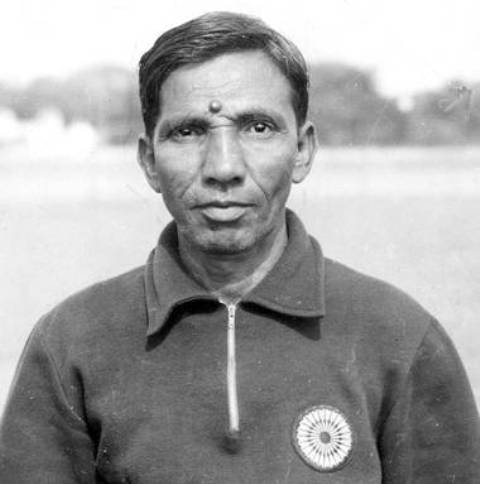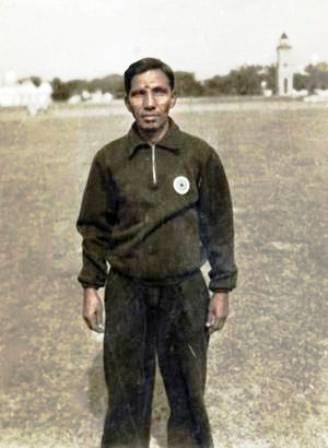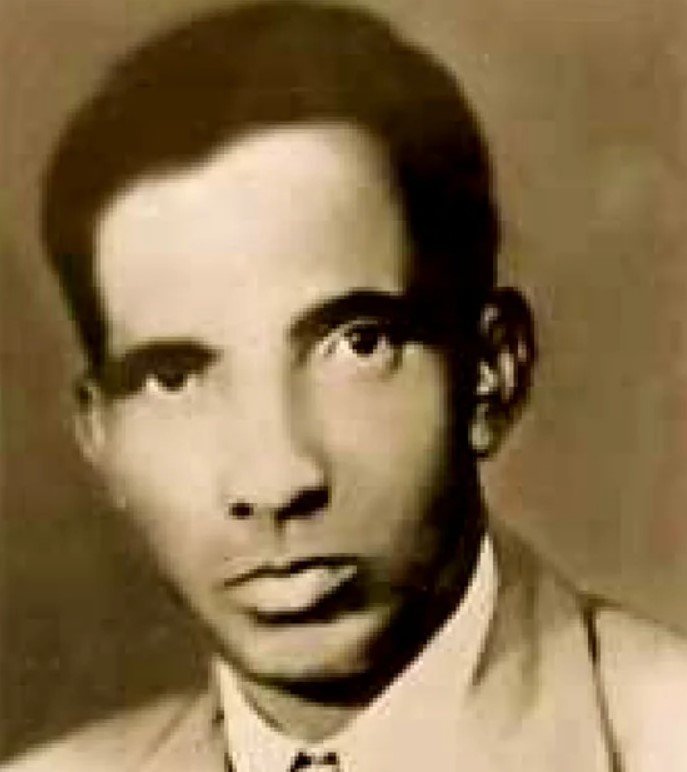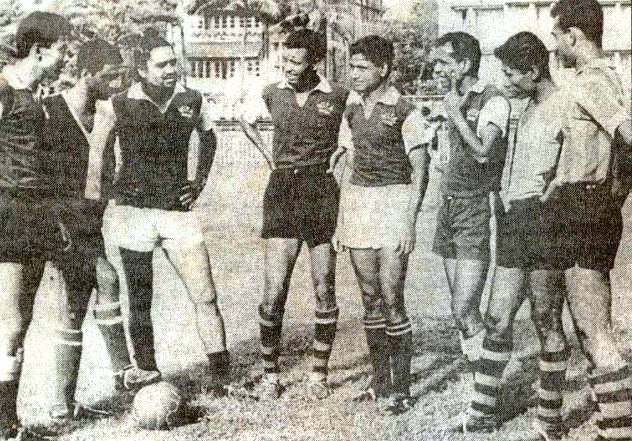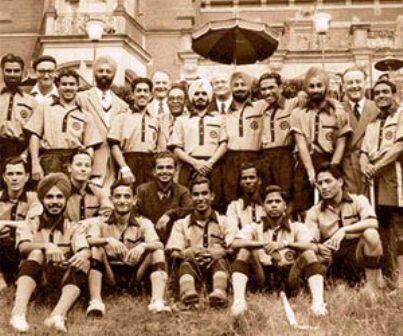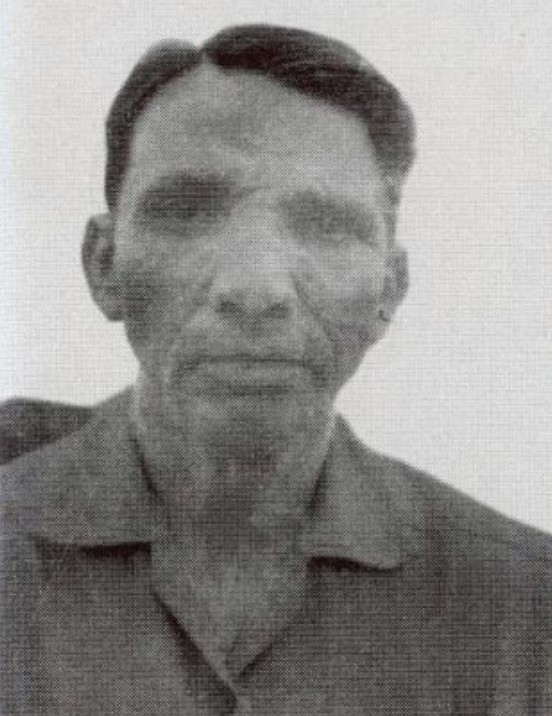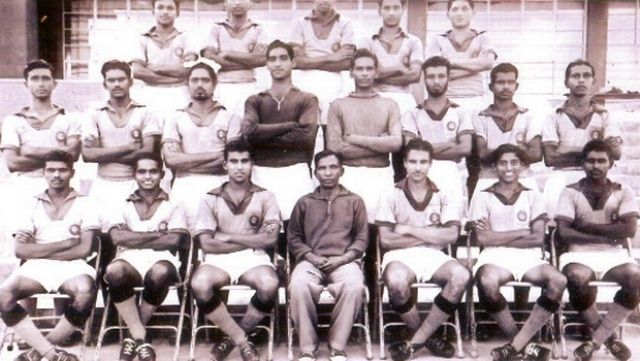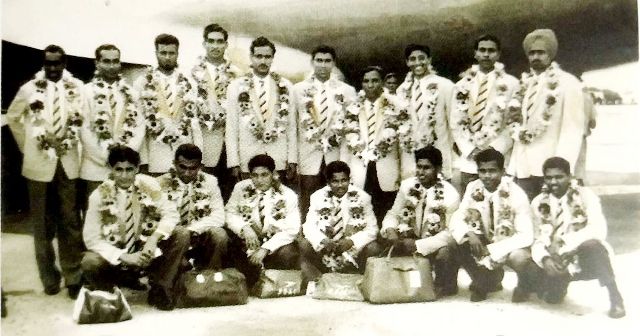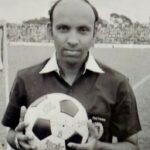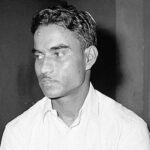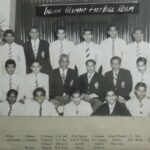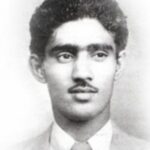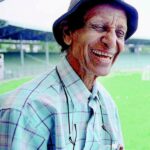Syed Abdul Rahim (Football Coach) Age, Death, Wife, Children, Family, Biography
Quick Info→
Wife: Saira Rahim
Age: 53 Years
Death Cause: Lung Cancer
| Bio/Wiki | |
|---|---|
| Other name | SA Rahim |
| Nickname(s) | • Rahim Saab • The Architect of Modern Indian Football • The Sleeping Giant • The Stan Cullis of India • The Indian Ferguson |
| Profession(s) | • Football Coach • Teacher |
| Famous For | Coaching the Indian team to the semi-finals of the 1956 Melbourne Olympic Football Tournament |
| Personal Life | |
| Date of Birth | 17 August 1909 (Tuesday) |
| Birthplace | Hyderabad, (then Hyderabad State) India |
| Date of Death | 11 June 1963 |
| Place of Death | Hyderabad |
| Age (at the time of death) | 53 Years |
| Death Cause | Lung Cancer |
| Zodiac sign | Leo |
| Nationality | Indian |
| Hometown | Hyderabad, (then Hyderabad State), India |
| College/University | Osmania University, India |
| Educational Qualification | Graduate |
| Religion | Islam |
| Food Habit | Non-Vegetarian |
| Relationships & More | |
| Marital Status (at the time of death) | Married |
| Family | |
| Wife/Spouse | Saira Rahim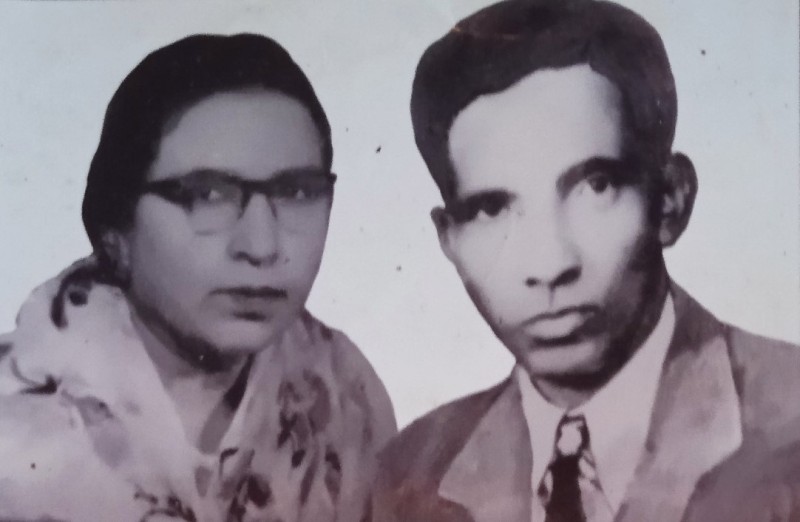 |
| Children | Son- 3 • Syed Shahid Hakim (former football player, FIFA official, Squadron Leader in IAF; died on 22 August 2021) 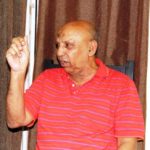 • S. S. Saleem Tameez 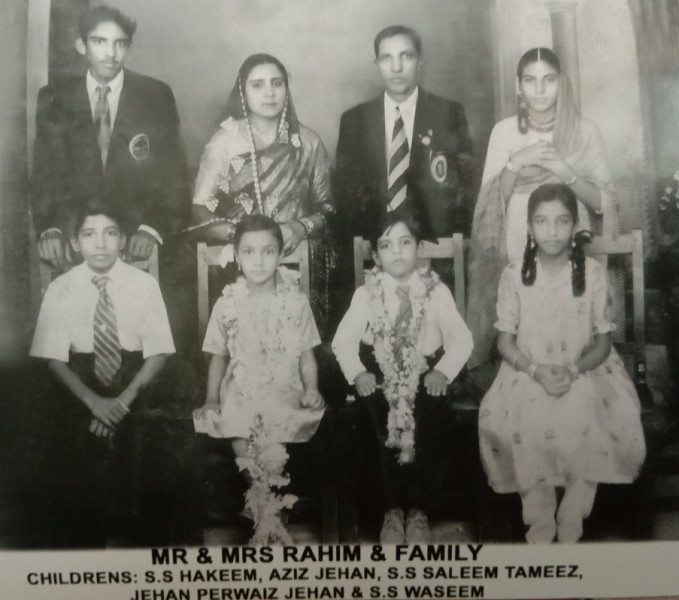 • S. S. Waseem (Footballer, died on 26 May 2020) 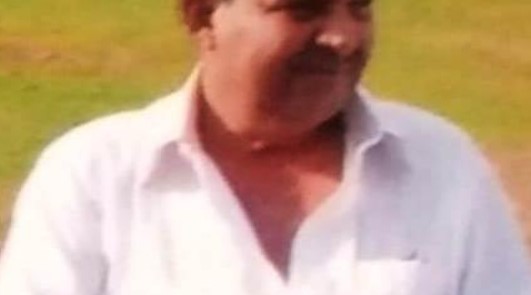 Daughter- 3 • Aziz Jehan • Jehan Perwaiz Jehan 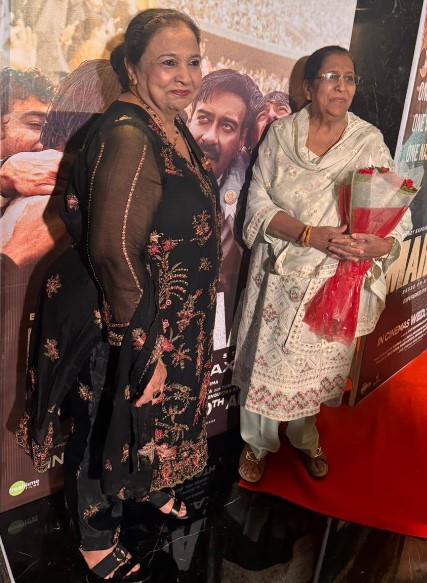 |
| Other Relatives | Daughter-in-law- Syeda Sadia (SS Hakim's wife; Politician)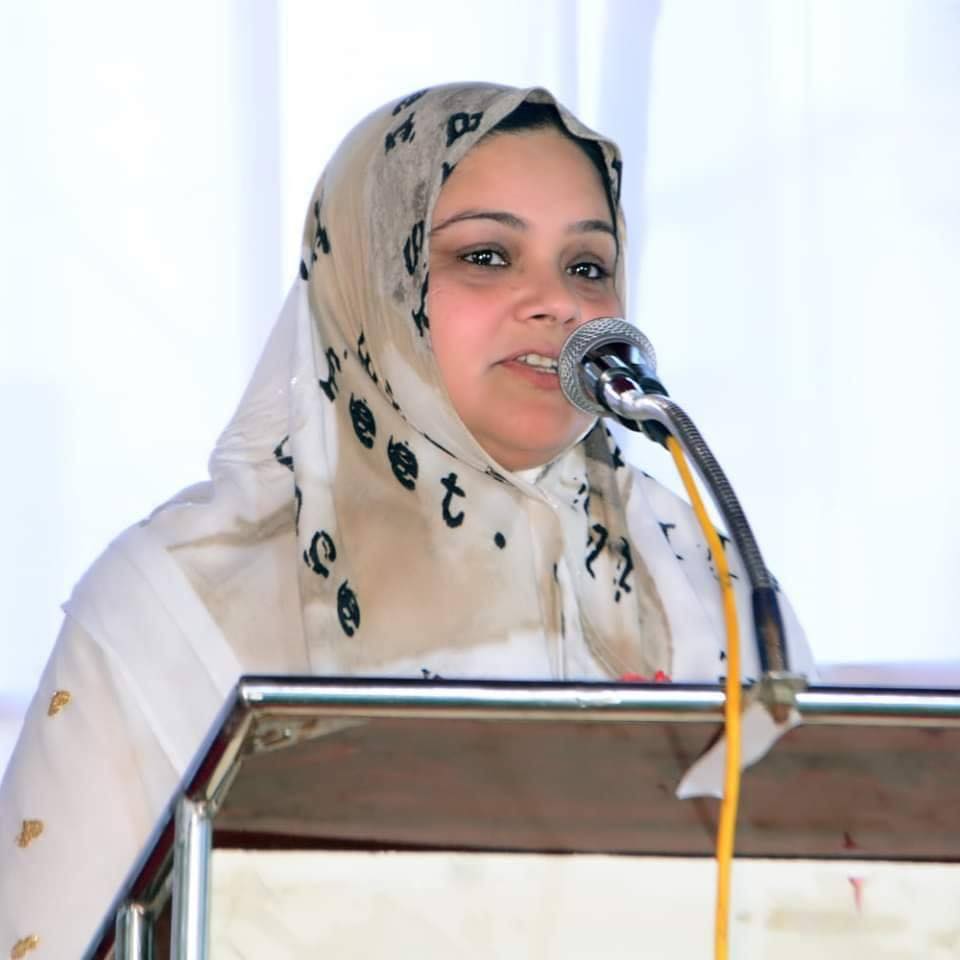 Paternal granddaughter- Madiha Raza (SS Hakim's daughter) Maternal grandson- Fazeel Zardi (Manager of Operations at Tata Consultancy Services) 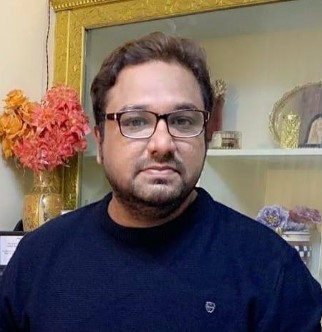 |
| Favourites | |
| Favourite Football Team | Hungary |
| Favourite Football Player(s) | Gusztáv Sebes, Robert Andrew Fruval |
Some Lesser Known Facts About Syed Abdul Rahim
- A sports lover since his childhood, Rahim was fascinated by football and had amazing football skills at such a young age.
- He was not only good at academics but also in athletics and used to participate in his school’s sports events.
- In the mid-1920s, football culture became popular in Hyderabad, which attracted a lot of youngsters including Rahim.
- Later, he went on to play football for the Osmania University football team.
- He started his career as a school teacher. He worked in several schools in Hyderabad including Kacheguda Middle School, Urdu Shariff School, Darul-ul-Uloom High School and Chadarghat High School, but never left his first love “football”
- While working as a teacher, he continued to play football. He was counted amongst the greatest players of Hyderabad from the 1920s to the early 1940s when he used to play for ‘Qamar Club,’ one of the best teams in Hyderabad’s local league of that time.
- In 1939, the Hyderabad Football Association came into existence, and 3 years later, in 1942, SM Hadi became the President of the Hyderabad Football Association and Rahim its Secretary, which he remained till he was alive.
- Rahim was a genius coach, often described as much ahead of his time. Most of his trained players went on to play at the international level.
- His strict disciplinarian nature, tactics, motivational speeches, and far-sightedness played a huge role in producing a chain of footballers and improving the infrastructure of football in Hyderabad.
- He did not like the typical British style of dribbling the ball. After becoming the coach of ‘Hyderabad City Police’ (HCP) or ‘City Afghans’ in 1943, he introduced the concept of passing the ball more and focusing on being ambidextrous i.e. ability to play with either foot.
- He used to organise customised football tournaments to sharpen up players’ reflexes, speed, stamina, skills, and techniques.
- His coaching talent came into the limelight in 1943 after HCP’s famous win in the finals of the Ashe Gold Cup in Bengaluru against Royal Air Force, which included England’s multi-sportsman Denis Compton.
- HCP also challenged the well-established Bengal football teams of that time as they beat Mohun Bagan in the finals of the 1950 Durand Cup.
- Under his strict coaching, the HCP team won 5 consecutive Rovers Cups, which remained a record for decades. The team also managed to reach the 5 Durand Cup finals and won 3 of them.
- He worked as a teacher at Kacheguda Middle School, Urdu Shariff School, Darul-ul-Uloom High School and Chadarghat High School.
- In 1950, he became the coach of the Indian National football team and the manager of the Hyderabad City Police team.
- After becoming the coach of the Indian national team, he changed the Indian team by picking up new talent instead of players from the 1948 Olympic team. He was never hesitant in dropping the non-performing stars and backing up the youngsters.
- His first major tournament as India’s coach was when India hosted the 1951 Asian Games in which India won the gold medal by beating the Iran team in the finals by 1-0.
- In 1952, the Indian football team faced a huge defeat from Yugoslavia by 10-1. India’s poor performance was mainly due to many Indian players playing without boots. When India came back, the AIFF announced that players had to wear boots while playing for India.
- It was said that after India’s humiliating performance at the 1952 Helsinki Olympics, a high-ranking AIFF official stopped Rahim from picking the team of his choice.
- After an embarrassing Olympic exit, he took inspiration from Hungary’s aggressive 4-2-4 formation and changed the formation of the state team from centre-half to ‘W-formation’. Initially, this formation was criticised, but Rahim had a vision behind it.
- His new formation proved to be the right move when India beat their arch-rivals Pakistan in the Quadrangular Tournament at Dhaka in 1952.
- At the 1954 Asian Games, he gave various motivational speeches to lift the spirit of the players. In the 1956 Melbourne Olympics, India stunned by beating the host Australia in the quarters and managed to finish 4th in the event.
- Four years later, at the 1960 Rome Olympics, the Indian team was placed in the group of death (a group containing several strong teams in the competition, not all of whom can compete in the next round) with Hungary, France, and Peru. They lost to both Hungary and Peru by 2-1, and 3-1 respectively, but managed to get a draw with France by 1-1.
- On the domestic front, the HPC managed to win all 12 national tournaments held in the years 1950, 1957, and 1959.
- Hyderabad and Andhra were considered separate bodies by the AIFF till 1958. In 1959, these two bodies were merged into the Andhra Pradesh Football Association, and Rahim was instrumental in letting it happen.
- India didn’t get a good start at the 1962 Asian Games in Jakarta; as they lost to South Korea by 2-1, but India managed to fight back with a 2-0 win over Japan in the very next match. In the final group match, India beat Thailand by 4-1 and progressed to the next stage.
- Before the final of the 1962 Asian Games, he took the Indian team to the streets of Jakarta and said, “Kal aap logon se mujhe ek tohfa chahiye….kal aap sona jitlo,” which means, “I want a gift from you tomorrow….the gold medal.”
- His words of motivation lifted the spirits of the Indian team. They surprised the South Korean team in the finals by playing the injured Jarnail Singh as a striker who used to play as a centre-forward in his college days and won the Asian Games gold by 2-1.
- He retired as the principal of a high school in Hyderabad and had been associated with the game till his untimely death due to cancer on 11 June 1963.
- The years 1945 to 1965 are considered as the “Golden Era of Hyderabad Football” and the years 1951 to 1962 are considered as the “Golden Era of Indian Football.”
- As a tribute to his legacy, the All India Football Federation (AIFF) renamed the I-League ‘Best Coach Award’ as ‘Syed Abdul Rahim Award.’
- Syed Abdul Rahim used to smoke and drink. He later contracted lung cancer and was almost bedridden for around 6 months before his death.
- Ajay Devgn portrayed Syed Abdul Rahim in the sports biopic film Maidaan (2024) which was produced by Boney Kapoor and directed by ad film director Amit Sharma.

